2014
 This chapter discusses Bangkok time in line with the studies of city life that draw attention to the everyday experience, urban practices, movement, memory and performing the city, this paper engages in a discussion of temporal cities realized through the symbolic, ritualistic performance of their inhabitants and manifestations of collective memory on the example of Bangkok, a mega-metropolis known for its rather precarious relationship with reality. Though all four of Pile’s phantasmagorias can be successfully applied to a reimagining of Bangkok, this chapter will focus on the two most obvious categories – ghosts and magic, exploring their connection to the city’s past and present and the lingering temporalities they leave behind.
This chapter discusses Bangkok time in line with the studies of city life that draw attention to the everyday experience, urban practices, movement, memory and performing the city, this paper engages in a discussion of temporal cities realized through the symbolic, ritualistic performance of their inhabitants and manifestations of collective memory on the example of Bangkok, a mega-metropolis known for its rather precarious relationship with reality. Though all four of Pile’s phantasmagorias can be successfully applied to a reimagining of Bangkok, this chapter will focus on the two most obvious categories – ghosts and magic, exploring their connection to the city’s past and present and the lingering temporalities they leave behind.

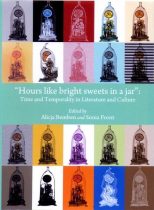
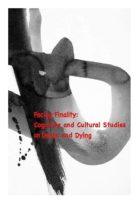
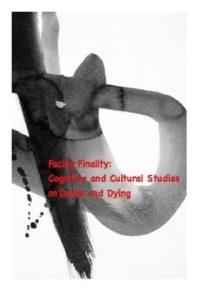 This article focuses on the popular representation of the afterlife, or our belief in such, as embodied in the idea of a ghost, a revenant, or a spectre, or in other words, the spirit of the deceased, as contrasted with the more animistic spiritual beings epitomising the powers of the natural world. For the lack of suitable research materials, the paper is geographically limited to the areas influenced by the major religious systems of beliefs, out of which Christianity (particularly Catholicism), Buddhism and Taoism seem to be particularly spirit-friendly, and to the areas culturally abounding in literary and cinematic representations of the spiritual encounters between the living and the dead. At the time when inter-cultural communication has become a hot topic to discuss, we become aware that even the dead are expected to resolve their cultural differences. One way to bring harmony to the culturally diverse world of contemporary spirits, as this paper suggests, is to see them as subject to the same process of globalisation and informatization as the living.
This article focuses on the popular representation of the afterlife, or our belief in such, as embodied in the idea of a ghost, a revenant, or a spectre, or in other words, the spirit of the deceased, as contrasted with the more animistic spiritual beings epitomising the powers of the natural world. For the lack of suitable research materials, the paper is geographically limited to the areas influenced by the major religious systems of beliefs, out of which Christianity (particularly Catholicism), Buddhism and Taoism seem to be particularly spirit-friendly, and to the areas culturally abounding in literary and cinematic representations of the spiritual encounters between the living and the dead. At the time when inter-cultural communication has become a hot topic to discuss, we become aware that even the dead are expected to resolve their cultural differences. One way to bring harmony to the culturally diverse world of contemporary spirits, as this paper suggests, is to see them as subject to the same process of globalisation and informatization as the living.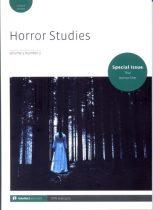
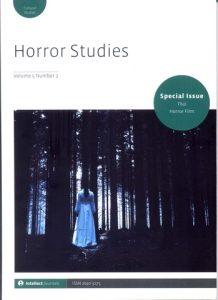 While folk horror has never been identified as exclusive to western cinema, most studies of the topic have so far been strongly aligned with western world-views, philosophies and methodologies. This makes it difficult to apply their findings to films made in non-Christian non-western countries, such as Thailand. This article discusses Banjong Pisanthanakun’s film Rang Song (The Medium) (2021) as a case in point to demonstrate how folk horror operates as a mode in Thai cinema. Building on the existing studies and modifying the current definitions of folk horror to apply them to the Thai cultural context, the article argues that Thai folk horror narratives are steeped in representations of the urban–rural divide that pit metropolitan Bangkok against low-income provinces (in particular, the northeastern region of Isan) and reflect on cultural tensions related to ethnicity and class.
While folk horror has never been identified as exclusive to western cinema, most studies of the topic have so far been strongly aligned with western world-views, philosophies and methodologies. This makes it difficult to apply their findings to films made in non-Christian non-western countries, such as Thailand. This article discusses Banjong Pisanthanakun’s film Rang Song (The Medium) (2021) as a case in point to demonstrate how folk horror operates as a mode in Thai cinema. Building on the existing studies and modifying the current definitions of folk horror to apply them to the Thai cultural context, the article argues that Thai folk horror narratives are steeped in representations of the urban–rural divide that pit metropolitan Bangkok against low-income provinces (in particular, the northeastern region of Isan) and reflect on cultural tensions related to ethnicity and class.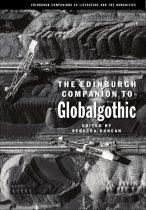
 This article discusses three major media forms that drive the globalisation of Asian Gothic: literature originally written in English, film, and original television series created specifically for global SVOD platforms like Netflix, Amazon Prime or HBO Go. The article focuses in more detail on three texts: a novel Ponti (2018) written by a Singaporean author Sharlene Teo, discussed in a larger context of texts featuring a Malay monster known as the pontianak; a Taiwanese film The Tag-Along (Cheng 2015) examined in relation to other East Asian films that feature forest-dwelling child-like spirits/demons that imitate human voice and lure their victims into the wilderness; and an Indonesian mini-series Halfworlds (2015) produced by HBO Asia and directed by Joko Anwar, which will be situated in the context of the director’s overall engagement with folk horror. The article argues that such productions promote an understanding of globalgothic in terms of texts that reconfigure elements of Gothic in order to negotiate transnational relationships from the socio-historical or cultural vantage point of a certain region, in this case the regions of East and Southeast Asia, and that these texts are to a large extent the results of specific production and distribution practices and strategies characteristic of global media.
This article discusses three major media forms that drive the globalisation of Asian Gothic: literature originally written in English, film, and original television series created specifically for global SVOD platforms like Netflix, Amazon Prime or HBO Go. The article focuses in more detail on three texts: a novel Ponti (2018) written by a Singaporean author Sharlene Teo, discussed in a larger context of texts featuring a Malay monster known as the pontianak; a Taiwanese film The Tag-Along (Cheng 2015) examined in relation to other East Asian films that feature forest-dwelling child-like spirits/demons that imitate human voice and lure their victims into the wilderness; and an Indonesian mini-series Halfworlds (2015) produced by HBO Asia and directed by Joko Anwar, which will be situated in the context of the director’s overall engagement with folk horror. The article argues that such productions promote an understanding of globalgothic in terms of texts that reconfigure elements of Gothic in order to negotiate transnational relationships from the socio-historical or cultural vantage point of a certain region, in this case the regions of East and Southeast Asia, and that these texts are to a large extent the results of specific production and distribution practices and strategies characteristic of global media.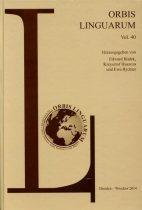
 This article argues that the negative portrayal of medical professionals in contemporary Thai horror is to a certain extent reminiscent of the tensions between the official and popular attitudes to Western bio-medicine and Traditional Thai Medicine (TTM) in Thai society. The article argues that medical doctors, together with other members of the professional community, such as for instance architects, or journalists, represent a relatively high level in the Thai social hierarchy which can be openly criticized without much fear that the films will be cut by censors. Last but not least, the article will look in more detail on Paween Purijitpanya’s debut feature The Body #19 (2006). Set within the less-than-glamorous world of medical professionals, the film toys with the concept of the mental disease (schizophrenia), which in traditional Thai folk medicine has consequently been attributed to spiritual possession. This dual spiritual/medical nature of the mental disease in Thai popular perception, has allowed the filmmakers to create a film that can be seen as simultaneously repeating and breaking the established Thai horror formulas. At the same time, while directing our attention to the notion of disease, the film offers an interesting, though subtle representation of the disintegration of the traditional hierarchical Thai society and its values.
This article argues that the negative portrayal of medical professionals in contemporary Thai horror is to a certain extent reminiscent of the tensions between the official and popular attitudes to Western bio-medicine and Traditional Thai Medicine (TTM) in Thai society. The article argues that medical doctors, together with other members of the professional community, such as for instance architects, or journalists, represent a relatively high level in the Thai social hierarchy which can be openly criticized without much fear that the films will be cut by censors. Last but not least, the article will look in more detail on Paween Purijitpanya’s debut feature The Body #19 (2006). Set within the less-than-glamorous world of medical professionals, the film toys with the concept of the mental disease (schizophrenia), which in traditional Thai folk medicine has consequently been attributed to spiritual possession. This dual spiritual/medical nature of the mental disease in Thai popular perception, has allowed the filmmakers to create a film that can be seen as simultaneously repeating and breaking the established Thai horror formulas. At the same time, while directing our attention to the notion of disease, the film offers an interesting, though subtle representation of the disintegration of the traditional hierarchical Thai society and its values.
 This article revisits two of the most iconic Thai monstrosities, phi pop and phi krasue, whose changing representation owes equally as much to local folklore, as to their ongoing reinterpretations in popular culture texts, particularly in film and television. The paper discusses two such considerations, Paul Spurrier’s P (2005) and Yuthlert Sippapak’s Krasue Valentine (2006), films that reject the long-standing notion that animistic creatures belong in the countryside and portray phi pop and phi krasue’s adaptation to city life. Though commonplace, animistic beliefs and practices have been deemed incompatible with the dominant discourses of modernization and urbanization that characterise twenty-first century Thailand. Creatures like phi pop and phi krasue have been branded as uncivilised superstition and ridiculed through their unflattering portrayals in oddball comedies. This article argues that by inviting these monsters to relocate to contemporary Bangkok, Spurrier and Sippapak redefine their attributes for the modern urban setting and create hybrids by blending local beliefs and cinematic conventions. The creatures’ predatory character is additionally augmented by the portrayal of the city as itself vampiric. The article therefore reads these predatory spirits in parallel with the metaphor of the female vampire – a sexually aggressive voracious creature that threatens male patriarchal order and redefines motherhood.
This article revisits two of the most iconic Thai monstrosities, phi pop and phi krasue, whose changing representation owes equally as much to local folklore, as to their ongoing reinterpretations in popular culture texts, particularly in film and television. The paper discusses two such considerations, Paul Spurrier’s P (2005) and Yuthlert Sippapak’s Krasue Valentine (2006), films that reject the long-standing notion that animistic creatures belong in the countryside and portray phi pop and phi krasue’s adaptation to city life. Though commonplace, animistic beliefs and practices have been deemed incompatible with the dominant discourses of modernization and urbanization that characterise twenty-first century Thailand. Creatures like phi pop and phi krasue have been branded as uncivilised superstition and ridiculed through their unflattering portrayals in oddball comedies. This article argues that by inviting these monsters to relocate to contemporary Bangkok, Spurrier and Sippapak redefine their attributes for the modern urban setting and create hybrids by blending local beliefs and cinematic conventions. The creatures’ predatory character is additionally augmented by the portrayal of the city as itself vampiric. The article therefore reads these predatory spirits in parallel with the metaphor of the female vampire – a sexually aggressive voracious creature that threatens male patriarchal order and redefines motherhood.
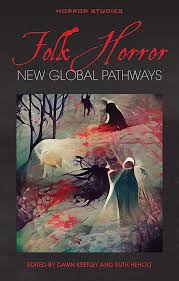 This article discusses the construction of phi pop as the monstrous figure of Thai folklore and proposes to read phi pop films as a classic example of Thai folk horror – a local sub-genre of horror whose main convention seems to be the representation of the insurmountable rural/urban divide. The films take different approaches to the topic, and the cinematic phi pop emerges as a figure of both comedy and horror, although in newer productions where the creature is no longer isolated in a remote village but rather follows rural migrants into the city, its portrayals are significantly more unnerving. The chapter provides a brief overview of Thai beliefs concerning the origin and characteristics of the creature and examines four films representative of most common approaches to Thai folk horror: Ban Phi Pop (Srisawat 1989), P (Spurrier 2005), Mekong Hotel (Weerasethakul 2012) and Pob (Ratanaruang 2018).
This article discusses the construction of phi pop as the monstrous figure of Thai folklore and proposes to read phi pop films as a classic example of Thai folk horror – a local sub-genre of horror whose main convention seems to be the representation of the insurmountable rural/urban divide. The films take different approaches to the topic, and the cinematic phi pop emerges as a figure of both comedy and horror, although in newer productions where the creature is no longer isolated in a remote village but rather follows rural migrants into the city, its portrayals are significantly more unnerving. The chapter provides a brief overview of Thai beliefs concerning the origin and characteristics of the creature and examines four films representative of most common approaches to Thai folk horror: Ban Phi Pop (Srisawat 1989), P (Spurrier 2005), Mekong Hotel (Weerasethakul 2012) and Pob (Ratanaruang 2018).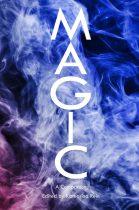
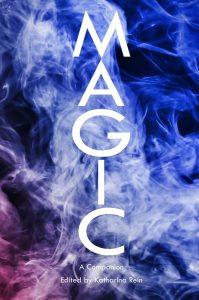 Khmer magic holds a prominent place in Thai imaginary and is often portrayed in films. This article will discuss the most common portrayals of Khmer black magic in Thai popular cinema – from horror films to action and adventure genres. The main films discussed here will be the Art of the Devil trilogy (Khon len khong, 2004, Long khong, 2005, and Long khong 2, 2008), with references also made to such productions like Necromancer (Chom khamang wet, 2005) and Khun Pan (2016) and Khun Pan 2 (2018). The article argues that while the cinematic portrayals of Khmer magic provide opportunities to engage in a graphic spectacle of violence, their depictions are also consequently gendered, with female practitioners being labelled as ‘evil’ and male practitioners using magic to assert their masculinity.
Khmer magic holds a prominent place in Thai imaginary and is often portrayed in films. This article will discuss the most common portrayals of Khmer black magic in Thai popular cinema – from horror films to action and adventure genres. The main films discussed here will be the Art of the Devil trilogy (Khon len khong, 2004, Long khong, 2005, and Long khong 2, 2008), with references also made to such productions like Necromancer (Chom khamang wet, 2005) and Khun Pan (2016) and Khun Pan 2 (2018). The article argues that while the cinematic portrayals of Khmer magic provide opportunities to engage in a graphic spectacle of violence, their depictions are also consequently gendered, with female practitioners being labelled as ‘evil’ and male practitioners using magic to assert their masculinity.
 The chapter offers a selective survey of twenty-first-century Asian Gothic. The main focus of the discussion is the most prominent contemporary trend involving reconfigurations of Asian folklore and the ghost story. More specifically, this chapter investigates literary and film narratives dealing with individual and collective trauma that revolve around the figure of the vengeful ghost, texts which reclaim animism as inherent part of Asian modernity, and Asian Gothic’s interrogation of gender dynamics and empowered women. The first section of the essay discusses the emergence of the female vengeful ghost as the dominant figure of fear in Asian horror films. The second section examines the portrayal of ghosts in literature of the region and the way their haunting engages with historical trauma and socio-cultural anxieties of the time. The final part investigates narratives that highlight the connection of women to shamanism and magic and proposes to read female spirituality in terms of empowerment.
The chapter offers a selective survey of twenty-first-century Asian Gothic. The main focus of the discussion is the most prominent contemporary trend involving reconfigurations of Asian folklore and the ghost story. More specifically, this chapter investigates literary and film narratives dealing with individual and collective trauma that revolve around the figure of the vengeful ghost, texts which reclaim animism as inherent part of Asian modernity, and Asian Gothic’s interrogation of gender dynamics and empowered women. The first section of the essay discusses the emergence of the female vengeful ghost as the dominant figure of fear in Asian horror films. The second section examines the portrayal of ghosts in literature of the region and the way their haunting engages with historical trauma and socio-cultural anxieties of the time. The final part investigates narratives that highlight the connection of women to shamanism and magic and proposes to read female spirituality in terms of empowerment.